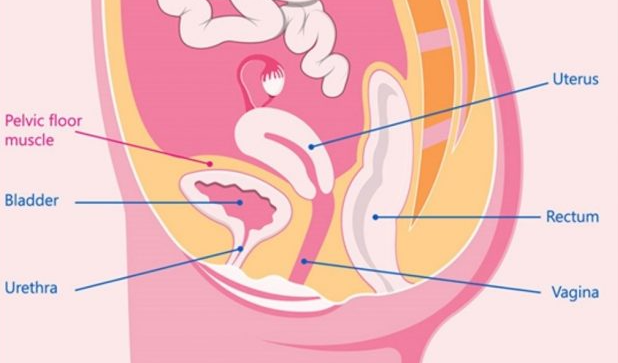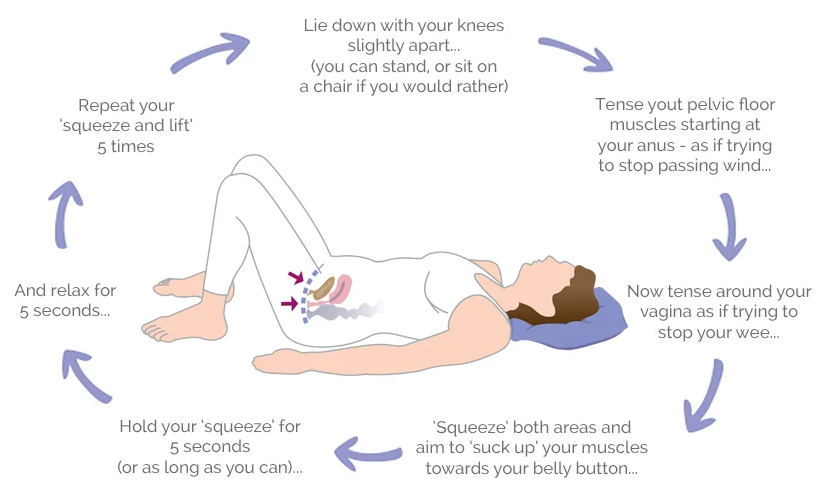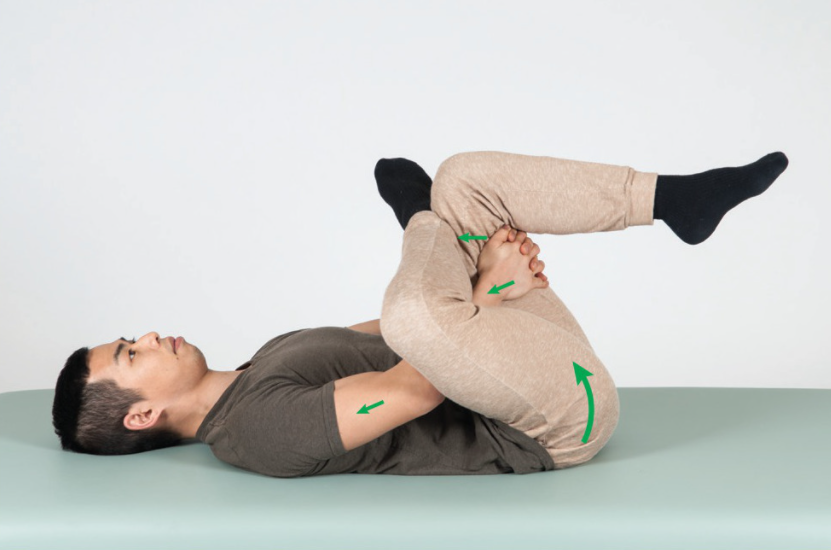Pelvic floor physiotherapy is a subdomain of physical therapy that deals specifically with the issues of the pelvic muscles. It can help reduce pelvic pain in men and women, speed up recovery in the postpartum period, and heal the pelvic floor muscles after an injury amongst other benefits.
But pelvic floor physical therapy is not only for pregnant women or new moms. Everyone can practice pelvic floor exercises including children and men.
In this article, we’ll answer some questions that you might have about pelvic floor physical therapy. We’ll help you understand what conditions we can treat with this therapy and who can benefit from it the most along with covering some other topics on pelvic floor physiotherapy.
Let’s get started.
What Is Pelvic Floor Physical Therapy?
Let’s begin by first discussing what the pelvic floor is.
It’s a sheet of muscles that lie between the pelvic cavity and the perineal region. Its job is to keep the pelvic organs such as the reproductive organs and the rectum safe inside the cavity. The pelvic floor muscles also help with controlling urine release, defecation and childbirth.

The perineal region lies between the thighs. It has the opening of the anus and vagina in females and scrotum and anus in males.
A weakness of the pelvic floor causes these organs to move into the lower pelvic region or the perineal region.
You’ll know if your pelvic floor is weak if you have issues with urine leaking out when you cough and laugh, or if you feel a bulge around the vaginal opening.
Here’s what pelvic floor physical therapy involves in a nutshell:
- Strengthening the muscles
- Improving sphincter control in urination and defecation
- Working on coordination of surrounding muscles and nerves
- Practicing relaxing the muscles of the pelvic floor
What Are the Benefits of Pelvic Floor Physical Therapy?
Pelvic Floor Physical Therapy helps with:
- Reducing pelvic floor organ prolapse (that’s when the pelvic organ, usually a portion of the uterus, moves out of its designated space and protrudes from the vagina due to a weakness of the pelvic floor).
- Reduce discomfort during sex, urination and defecation.
- Reduce urine and fecal incontinence (inability to control urine and stool release).
- Improve pelvic floor muscle health
- Return you to your daily routine or sports without discomfort or leaking urine.
- Decrease urine and stool urgency. That means you’ll be able to hold your urine for longer times than you can now.
- Decreases postpartum pain
A medical study in 2019 found that pelvic floor physiotherapy can help young kids with a condition called Dyssynergic Defecation.
The results showed that kids had an improvement in constipation symptoms as compared to conservative treatment approaches. They also found that fewer patients needed hospitalization for cleanouts after pelvic floor physical therapy.
Dyssynergic Defecation: A medical condition where there is a lack of coordination between the bowel muscles and nerves. It causes difficulty with defecation thus leading to chronic constipation in most cases.
These are only some of the ways that this subdomain of physical therapy can help you. The key factor here is to start pelvic floor physical therapy at the right time.
Is Pelvic Floor Physical Therapy for Men as Well?
Yes, Pelvic Floor Physical Therapy is for men too.
Too often, we equate pelvic floor physical therapy to women exclusively. But men can benefit from it just as much. Pelvic floor issues are uncommon in men as compared to women for obvious reasons. And that’s why we tend to ignore men’s pelvic floor health.
The therapy can help men after prostate surgery. Prolonged prostate inflammation can cause your bladder to weaken due to constant pressure on the urethra. That can lead to urine leakage and pelvic pain.
Men can seek out pelvic floor physiotherapy if they suffer from pelvic floor pain, if they’re obese or have suffered an injury to the area. Pain in the region can cause your muscles to tighten up and that can lead to more pain and urinary issues. [i] , [ii]
The therapy techniques for men are quite similar to those for women – with some modifications of course. These mainly involve education and retraining of muscle activation.[iii]
What Are Pelvic Floor Physical Therapy Exercises?
We can divide the pelvic floor muscle issues into two main categories – weakened and hypertonic (increase in the tone of the muscles or spasm).
The therapy regimen for pelvic floor exercises begins with counseling and educating the patients about what the pelvic floor is and what the muscles do. Here are some exercises included in pelvic floor physical therapy:
1. Kegel Exercises
Kegel exercises are prescribed when the pelvic floor muscles are weak. These could include commands such as
- Tense the muscles as if you were stopping urine midstream.
- Squeeze the muscles around the vagina or urethra and pull them upwards toward the abdomen. For men: try to shorten your penis and pull it inwards towards your body.
- Try to stop gas passing through the anus without tensing the buttock. Hold for a few seconds. Relax.
Kegel exercises purely target the pelvic floor muscles. These are great for bringing back control in the sphincter muscles to improve urinary incontinence and prolapse symptoms.[iv]
You can increase the time of contraction as you progress. And continue doing these until the symptoms resolve.

2. Biofeedback Sensors to Down Train the Muscles
Down training is a technique where we teach you to relax the muscles. It’s the opposite of what you would do to build strength in any muscle.
Down-training is used when the pelvic floor muscles are in spasm and overly active.
Your physical therapist might use biofeedback sensors for down training. These are electronic devices that show the strength of a contraction visually.[v]
For example, when you hold a stress ball in your hand and squeeze, you can see the ball changing shape and it serves as feedback that tells you that you’ve applied enough pressure.
Similarly, with the pelvic floor biofeedback, a probe is inserted in your vagina or anus and you can see the contractions on a monitor. That way, your therapist shows you how it feels when your muscles are tense versus when they are relaxed. Then you can properly understand how it feels to relax the muscles. And that’s how you down train your muscles.
This also helps to activate all the muscles in coordination instead of excessively activating a few of them. Biofeedback training improves your awareness of pelvic floor muscle activity.
3. Diaphragmatic Breathing
The pelvic floor and diaphragm are closely linked.
When we inhale, the pelvic floor muscles relax and they come back to the initial position when we exhale. That’s why deep diaphragmatic breathing can help to normalize pelvic floor activity. And it helps in both cases – in the weakness of the muscle and in overactivity (hypertonicity). [vi]
The general instructions we give for deep diaphragmatic breathing are
- Sit or lie down on a comfortable surface.
- Breathe in through your nose.
- Let the air fill your lungs as much as you can. Direct the air towards your lower belly instead of the chest. For ease, place your hand over the chest and watch it to make sure it doesn’t move while you breathe. Only your belly should go outwards.
- Let the air out through your mouth. Again, your chest should not move. Bring your belly back in.
4. Pelvic and Hip Stretches
Stretches can help with relaxing the tight pelvic floor muscles. These can also reduce pain when there are muscular adhesions in the pelvic cavity which is the case in endometriosis.
You can try different stretches for this such as the child’s pose in Yoga, piriformis stretch and adductor stretch/supported butterfly to name a few.



Vaginal dilators are some devices that can help as well. These are small cylindrical shaped tools that are inserted into the vagina to help open up the tight muscles that might be in spasm.
Your Questions About Pelvic Floor Physiotherapy in Pregnancy Answered
Pelvic floor physiotherapy in pregnancy is a great way to proactively strengthen your muscles. Many medical studies show that starting pelvic floor exercise during pregnancy can speed up the recovery of the pelvic floor muscles after giving birth. [vii]
The exercises you do here are the same as those that we’ve covered above. You can start pelvic floor physiotherapy in the second trimester of your pregnancy. Research shows that the exercise regimen should last at least 8 weeks for good results.
When Should You Start Pelvic Floor Physiotherapy After Giving Birth?
You can start pelvic floor exercises right after giving birth. But you need to check in with your physical therapist before you begin. Doing the wrong exercises and working without trained PT can be harmful, so don’t just start on your own.
These exercises help mainly with reducing urinary incontinence and pelvic organ prolapse.[viii]
Your pelvic muscles undergo tremendous pressure during childbirth which causes them to stretch and weaken. And in some extreme cases, you can even have a pelvic muscle tear. So it’s critical to start therapy on time!
Can Pelvic Floor Physiotherapy Help With Prolapse?
Yes. Pelvic floor physiotherapy can help reduce prolapse.
Pelvic organ prolapse happens due to a weakness of the muscles. That’s a common side-effect of giving birth. But it can also happen due to obesity, hysterectomy and old age.
The exercises your physical therapist will prescribe for prolapse include Kegels to strengthen the muscles and the use of biofeedback techniques to control pelvic muscle contractions.
General Questions About Pelvic Floor Physiotherapy
Here are answers to some frequently asked questions about pelvic floor physiotherapy:
Who Needs Pelvic Floor Physiotherapy?
Both men and women can benefit from pelvic floor physical therapy.
You might need it during pregnancy, after childbirth, if you’ve suffered an injury to the pelvic floor and before and after surgery. Older people often benefit from pelvic floor physical therapy because these muscles, much like other areas of the body, tend to get weaker with age.
Obesity also negatively affects the strength of the pelvic floor. So obese people should start a pelvic floor physical therapy regimen as a proactive measure to prevent weakness of these muscles.
When Is the Best Time to Start Pelvic Floor Physical Therapy?
The best time to start pelvic floor physiotherapy is as soon as you start noticing the symptoms that we’ve covered at the beginning of this article. You should visit your doctor or pelvic floor physiotherapist to get a proper checkup and establish a baseline and then begin the exercises.
What to Expect in Your First Visit to a Pelvic Floor Physiotherapist?
Pelvic floor physical therapy sessions begin just like any other session. Your PT will ask you questions about your medical history, the onset of symptoms, intensity of pain if there is pain, your medications and previous surgeries and so on.
Then you’ll undergo a physical assessment. Here, your therapist will palpate your pelvic floor and possibly use a gloved finger to check the vagina and anus contractions.
Then your physiotherapist might ask you to perform different activities such as coughing or jumping to see if the pain comes on or if there is urine leakage etc.
You should wear comfortable clothing for a visit to a pelvic floor physiotherapist. Be prepared to undress for assessment and exercises as well. Rest assured, most clinics and hospitals are cautious to take extra care of your privacy during these physical therapy sessions.
Your first session will likely only be an assessment depending on how long the visit is. But you might get a home exercise program of some basic pelvic floor exercises if your physiotherapist sees fit to do so.
Learn more about the 6 Things You Should Know for Your First PT Visit
Does Pelvic Floor Physical Therapy Work? How Long Does It Take To See Results?
Pelvic floor physiotherapy works when it’s prescribed for the right conditions and if you do them the right way. Several researches show its effectiveness in treating pelvic organ prolapse in women and in reducing urinary incontinence and pain in both men and women.[ix] , [x]
How soon you can expect to see the results varies from person to person because of the difference in the baseline, body time and adherence to the treatment plan.
In Summary
Pelvic floor exercises are not one-size-fits-all. You need to get an assessment done by a trained physical therapist to determine the kind of exercises you need, how long you need them for and the level of recovery you can expect.
Many studies and research tells us that pelvic floor physiotherapy has the potential for excellent results. If you have any of the symptoms discussed in this article, or if you want to proactively strengthen your pelvic floor, then reach out to a physiotherapist and schedule a checkup.
[i] https://www.sciencedirect.com/science/article/abs/pii/S0140673611607514
[ii] https://link.springer.com/article/10.1007/s11934-000-0051-z
[iii]https://www.sciencedirect.com/science/article/abs/pii/S0302283804006402
[iv] https://www.sciencedirect.com/science/article/abs/pii/S0301211511003952
[v] https://www.sciencedirect.com/science/article/abs/pii/0002937886903935
[vi] https://www.jstage.jst.go.jp/article/jpts/27/7/27_jpts-2015-148/_article/-char/ja/
[vii] https://www.scielo.br/j/clin/a/LmzD3pdJDwtnQTxjNj99Pdy/?format=pdf&lang=en
[viii] https://link.springer.com/article/10.1007/BF02765817
[ix] https://www.sciencedirect.com/science/article/abs/pii/S0002937810002504